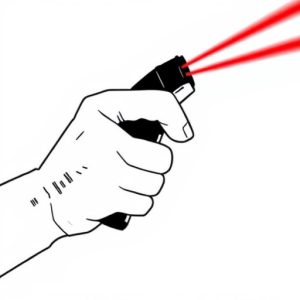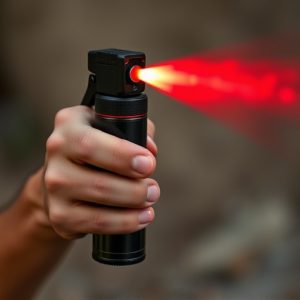Pepper Spray in Rain: Ingredients, Performance, & Wet Conditions Usage
Pepper spray effectiveness in rainy conditions is reduced due to water dispersion impacting range an…….
Pepper spray effectiveness in rainy conditions is reduced due to water dispersion impacting range and visibility. However, modern water-resistant or waterproof pepper sprays retain potency thanks to active ingredients like oleoresin capsicum (OC) and capsaicin methyl ester (CME). Users should strategize in wet weather: aim for open spaces, use at close range, and avoid frequent spraying to ensure successful immobilization of attackers.
“Discover the power of aerosol spray defense, especially its effectiveness against attackers in wet conditions. This comprehensive guide explores the science behind pepper spray, focusing on active ingredients and their performance. We delve into the unique challenges posed by rain, offering a detailed analysis of its impact on spray efficacy.
Learn best practices for optimal use during wet weather, ensuring maximum protection. Uncover strategies to enhance pepper spray’s effectiveness in rainstorms, providing valuable insights for personal safety and law enforcement applications. Enhance your understanding of Pepper Spray Effectiveness in Rain today.”
- Understanding Pepper Spray: Active Ingredients and Their Effectiveness
- The Impact of Rain on Pepper Spray Performance: A Comprehensive Analysis
- Best Practices for Using Pepper Spray in Wet Conditions
Understanding Pepper Spray: Active Ingredients and Their Effectiveness
Pepper spray is a popular self-defense tool that uses capsaicin, the active ingredient found in chili peppers, to cause temporary blindness and severe pain in the eyes and respiratory system of an attacker. This irritant disrupts the normal functioning of sensory neurons, leading to a sensation of burning and discomfort. The effectiveness of pepper spray lies in its ability to immobilize an assailant for a short period, allowing the user to escape or seek help.
When it comes to Pepper Spray Effectiveness in Rain, conditions can impact its performance. Water-based environments, such as rainy weather, may reduce the spray’s range and visibility due to the dispersion of the chemicals. However, many modern pepper sprays are designed with water-resistant or waterproof formulations, ensuring their potency remains intact even under wet conditions. Active ingredients like oleoresin capsicum (OC) and capsaicin methyl ester (CME) maintain their irritant properties, making these sprays reliable tools for personal safety, regardless of weather conditions.
The Impact of Rain on Pepper Spray Performance: A Comprehensive Analysis
The effectiveness of pepper spray as a defense mechanism can be significantly influenced by adverse weather conditions, particularly rainfall. When used outdoors, pepper spray relies on its ability to remain airborne and reach the eyes and respiratory system of an attacker. However, rain has several impacts on its performance. Firstly, raindrops act as a physical barrier, reducing the concentration of pepper spray particles in the air. This can lessen the impact of the spray, making it less likely to cause temporary blindness or respiratory distress in the target.
Moreover, water-based pepper spray formulations may experience increased dilution and rapid evaporation due to rain. The wet environment can also lead to faster degradation of the active ingredients, reducing the overall potency of the spray over time. These factors highlight the importance of understanding the environmental conditions during deployment, especially when using pepper spray in outdoor settings. Users should consider alternative strategies or ensure they have backup options if facing rainy weather conditions for optimal self-defense.
Best Practices for Using Pepper Spray in Wet Conditions
When it comes to using pepper spray in wet conditions, such as rain or high humidity, understanding best practices is crucial for maximizing its effectiveness. One key consideration is ensuring proper ventilation; in damp environments, pepper spray particles may remain suspended in the air for longer periods, increasing the risk of inhalation for both the attacker and the user. Therefore, it’s essential to aim towards open spaces or areas with good airflow.
Additionally, users should be mindful of the spray’s range and frequency of use. Pepper spray is most effective at close range; in wet conditions, the spray’s reach might be slightly reduced due to water droplets interfering with particle projection. It’s recommended to get up close and personal, aiming for the face and eyes, to ensure a successful disablement. Users should also practice caution not to waste valuable rounds by spraying too frequently, as this could result in lessening the spray’s impact over time.
In understanding the effectiveness of pepper spray, especially in wet conditions like rain, it’s clear that while water can reduce its immediate impact, proper usage techniques and knowledge of product ingredients are key to ensuring its efficacy. By grasping the dynamics of pepper spray performance under rain and implementing best practices, individuals can enhance their self-defense capabilities, making pepper spray a valuable tool for personal safety in various environments.


